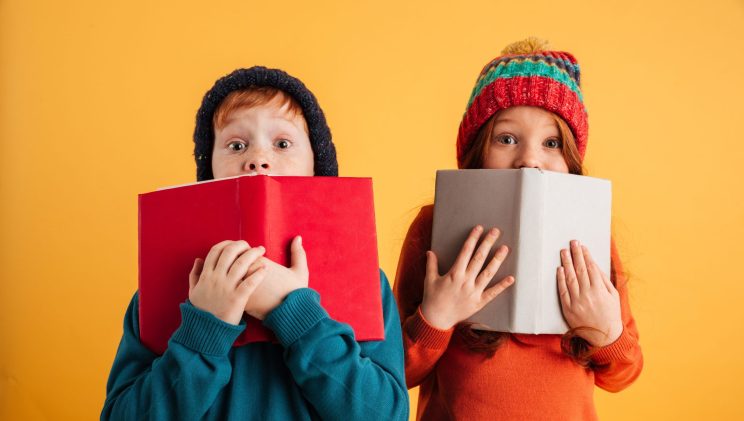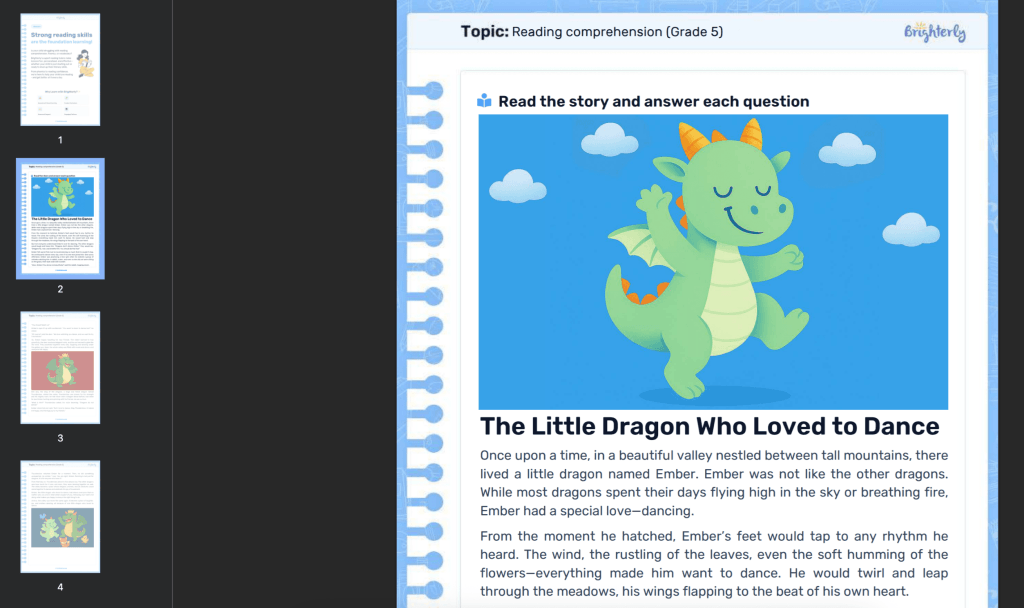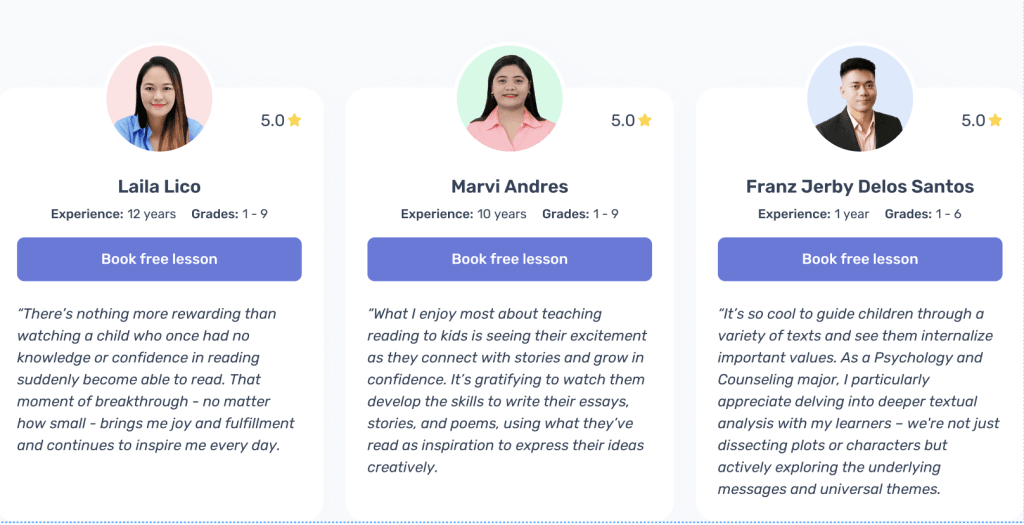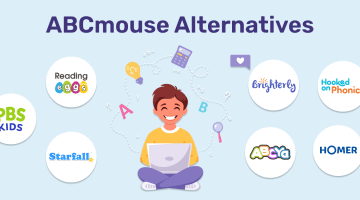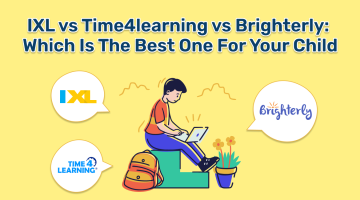Reading With Expression: Bringing Stories to Life
reviewed by Laila A. Lico
Updated on October 7, 2025
Ever heard a story read in a flat, robot voice? Not fun! Reading with expression lets kids make characters laugh, whisper, or sound surprised. That little sparkle of tone and rhythm can turn simple words into a full adventure, keeping every listener engaged and excited.
Key points
- Expressional reading transforms ordinary words into captivating tales. Children learn how to make situations and people come to life by using rhythm, tone, and pauses.
- Reading may be made fun and memorable with simple everyday reading with expression activities like yelling dramatic moments, whispering tense lines, or playing out characters.
- Children can practice rhythm, observe punctuation, and experiment with voice while having fun with games like echo reading, character swap, and enjoyable soundtracks.
- Children who practice reading with expression gain confidence, fluency, and the ability to relate words to emotions.
- Brighterly reading worksheets help kids develop a love of reading by guiding them step-by-step through enjoyable passages, entertaining activities, and simple ways for parents to monitor their progress.
What does it mean to read with expression?
Reading with expression is like acting with your voice. To fit the atmosphere, you alter sound, speed up or slow down, and stretch words. All of a sudden, books start to feel like mental movies! Reading expression keeps children engaged and fosters their ability to communicate their thoughts and feelings.
Children who read expressively begin to pick up on features like dialogue, punctuation, and descriptive words that they might otherwise overlook. It empowers kids to empathize with the characters and gain a better understanding of the narrative. Because kids can experiment with voices, dramatic pauses, and acting out various passages of the story, it also makes reading more enjoyable. Reading becomes a thrilling experience rather than just words on a page as a result of this practice, which gradually boosts confidence.
What is the word for reading with expression?
It’s called fluency, but teachers often say expression reading. To keep the story from sounding monotonous, try altering the pitch, tempo, or volume of your voice. Rather, you get the impression that the characters are communicating directly to you.
Examples
- Shouting “Watch out!” like a superhero saving the day
- Whispering “It’s a secret…” as if sharing hidden treasure
- Stretching out “Nooo!” like you’re in a dramatic movie scene

Surprised brunette girl nerd in eyeglasses looking camera with opened mouth while reading book isolated
Try this mini activity: Pick one sentence from a story and read it three different ways – happy, scared, and super excited. Ask kids to guess the mood.
After that, kids can have fun comparing the different ways the same sentence can sound. You can ask them which version they thought was the most exciting, spookiest, or funniest. This helps children observe how altering a story’s tone, tempo, or volume can fundamentally change it. It’s a fun approach to teaching reading with expression to create stories that are vibrant, captivating, and emotional.
Note: Fluency, which encompasses accuracy, speed, and prosody (expression), is essential for reading comprehension. Fluent readers can focus on understanding the text rather than decoding words.
Reading with expression strategies
- Use Brighterly reading worksheets
- Practice reading with expression aloud
- Make reading with expression playful
- Echo reading game
- Make up fun sentences
- Discover the right word for reading with expression
- Soundtrack your story
- Character swap challenge
Brighterly reading worksheets for the best expression and intonation
Brighterly’s reading worksheets for kids make practicing reading with expression and intonation fun and interactive. Students can explore stories, passages, and short texts designed to help them read aloud with confidence, emphasizing tone, pauses, and emphasis naturally. Reading with expression worksheets give children clear guidance and playful exercises that let them experiment with voices, act out characters, and notice how punctuation and rhythm change the way a story sounds.
Why parents love Brighterly reading worksheets
- Grade-appropriate exercises that correspond to your child’s reading proficiency to ensure optimal learning
- Reading with expression worksheet turns practice into playtime with lively, entertaining passages.
- Activities that emphasize teaching tone, tempo, emotion, and reading with expression
- Simple progress monitoring that allows you to recognize progress and celebrate every victory
Parents notice that this method helps kids develop expression in reading fluency and become aware of how sentence structure, dialogue, and punctuation affect the story. Students are encouraged to experiment with their voices in each activity, which aids with their comprehension of characters’ emotionsand the text’s rhythm.
With step-by-step guidance and engaging exercises, Brighterly worksheets make reading a hands-on experience. Kids practice reading with expression daily, building fluency, comprehension, and confidence, while parents and teachers can track progress and celebrate improvement.
Note: According to the National Center on Improving Literacy, fluency with text, including reading with expression, frees cognitive resources to process meaning, thereby improving comprehension.
Practice reading with expression aloud
Reading aloud can be like putting on a tiny play! Kids get to try funny voices, add drama, and really feel the story. This is exactly what reading with good expression and meaning is all about.
Start with short stories, silly poems, or favorite books, and try:
- Acting out characters with silly or dramatic voices to practice oral reading
- Pausing for suspense or surprise
- Highlighting exciting, funny, or shocking parts
- Adding gestures or sound effects
This makes punctuation, rhythm, and emotion easier to notice, and suddenly the words jump off the page!
A reading tutor can be like a cheerleader and guide, showing the right word for reading with expression, giving tips on tone, and celebrating every “Wow!” moment. With some practice and a little fun, every story can turn into a mini adventure full of feeling and excitement!
Make reading with expression playful
Reading can be a mini-adventure! Let kids act out the story, use silly voices, or pretend they’re reporters sharing exciting news. Adding movement, gestures, or even puppets turns reading into a game they can’t wait to play.

Encourage them to explore tone, pauses, and excitement as they read aloud. By making the words come alive, children naturally improve fluency, comprehension, and confidence — all part of reading with expression for kids.
Short daily sessions of 10–15 minutes are perfect. Parents or reading tutors can jump in too, cheering on performances, giving little tips, and helping kids discover the joy of telling a story with feeling.
Echo reading game
Turn reading into a fun game by taking turns reading a line aloud. First, you read a line with feeling, using excitement, pauses, or a funny voice. Then your child “echoes” you, trying to copy the tone, speed, and emotion. It is a playful way to practice making the story come alive.
This is one of the reading with expression strategies that helps kids notice punctuation, rhythm, and how different emotions change the way a story sounds. Children get to practice loud, soft, fast, slow, and even whispering voices, which makes reading more lively and enjoyable.
Ideas to make echo reading extra fun
- Clap or snap after each echo to celebrate their effort
- Pretend the lines are part of a secret spy mission, funny play, or dramatic scene
- Swap roles and let your child be the first reader while you echo
With this game, reading becomes interactive, playful, and full of energy. Kids naturally improve fluency, expression, and confidence while having a great time with stories.
Fun sentences to practice reading with expression
Short, playful sentences are perfect for practicing tone, rhythm, and excitement. Try lines like “The dragon sneezed a fiery sneeze!” or “Watch out, the ice cream is melting fast!” – they make kids exaggerate emotions and play with voice.

You can create silly or dramatic scenarios so children naturally experiment with pauses, emphasis, and intonation. Repeating these fun sentences helps them gain confidence in sentences to practice reading with expression.
Parents or reading tutors can join in by acting out parts or giving challenges like whispering a spooky line or shouting a triumphant one. This turns practice into a mini performance, keeping kids motivated and excited to read.
Discover the right word for reading with expression
Ever wondered how to make stories jump off the page? The magic is reading with expression! It’s all about adding feeling, personality, and a little drama — just like actors on stage.
Kids can explore how punctuation, dialogue, and descriptive words completely change the mood of a story.
To make it playful and hands-on, try:
- Reading short, funny poems out loud
- Acting out silly scripts with different voices
- Highlighting exciting, surprising, or funny parts of a story
- Playing with pauses, tone, and speed to match the scene
With a bit of guidance, or even help from a reading tutor, children can master the words for reading with expression and turn every story into a mini performance full of fun and creativity!
Soundtrack your story – turn reading into a mini movie
Before starting a story, let your child pick a sound or song that matches the mood. It could be soft rain for a quiet part, suspenseful music for a scary scene, or happy tunes for a funny moment. As your child reads, encourage them to match their voice to the soundtrack:
- Soft and slow for calm or tense moments
- Louder and faster for exciting or funny parts
- Pauses or whispers when something surprising happens

This is a cool reading with expression activity that helps kids notice how tone, speed, and feelings change in a story. They also learn to use punctuation, add drama to dialogue, and give each part of the story its own feeling.
How to make it even more fun?
- Add little sound effects like footsteps, thunder, or animal noises
- Let your child be the director and pause the “movie” to repeat a dramatic part
- Try different sounds or songs for the same passage and see how it changes the story
Siblings, parents, or friends can participate as extra characters or audience members, so you can even make it into a small family performance. Ask your youngster to explain the sound or music’s emotional impact and how it relates to that particular plot point. They can try various reading aloud techniques, link emotions with words, and discover a whole new way to appreciate storytelling via this type of play. Stories come to life when reading and music are combined. It is more than just reading; it is a brief performance that is emotional, enjoyable, and imaginative.
Character swap challenge
Allow your youngster to alter voices for each character in a story that has multiple characters. For instance, a stupid frog may have a humorous squeaky voice, a sulky cat may sound like a whispering villain, or a courageous knight may have a loud, booming voice. Reading dialogue becomes more engaging and entertaining when voices change.
This reading with expression is called a great way to help children notice how different characters can sound and feel. It also teaches them how tone, speed, and emotion can change a story. Kids can have fun experimenting with voices, exaggerating emotions, and acting out little scenes as they read.
To achieve maximum results, parents or tutors can join in too. Take turns being different characters, add funny gestures, or challenge your child to make a new voice for a character every time the story is read. Reading becomes a mini performance full of creativity, laughter, and imagination.
How to teach reading with expression with reading tutors’ help?
Tutors teach reading with expression by showing kids how to use tone, pauses, and emphasis. Brighterly reading tutors help children notice how punctuation, pauses, and tone change the way a story sounds. They guide practice with short stories or poems, give feedback, and encourage children to bring characters and events to life while reading aloud.
Kids can try different ways to make reading playful and exciting, such as:
- Using different voices for characters
- Adding drama to exciting parts
- Whispering for suspense
- Acting out scenes and using gestures
- Trying silly or dramatic voices
- Building confidence and feeling proud of their progress
With hands-on guidance, students naturally improve reading with emotion while building confidence. Lessons are interactive, full of fun activities, and designed to keep kids motivated.
Through teaching reading with expression, children learn to bring stories to life, connect words with feelings, and experiment with different ways of reading aloud. They begin to notice how tone and volume affect meaning and start enjoying the rhythm of language. Over time, reading becomes more than just words on a page — it becomes a fun, engaging way for kids to express themselves and understand characters and emotions in the story.
Why is reading with expression important?
Reading with expression examples show how tone, pauses, and emphasis bring stories to life. Kids who practice it understand characters, follow the action, and enjoy reading more. This skill improves comprehension, engagement, and confidence, making reading both fun and meaningful.
It also helps kids understand what they’re reading while making reading way more fun.
A few simple ways to practice reading with expression
- Changing the tone for different characters
- Pausing at punctuation for dramatic effect
- Adding excitement or suspense to key moments
With a little guidance from parents, teachers, or a reading tutor, children learn to use intonation, emotion, and rhythm, which makes stories exciting instead of boring.
Wondering how to teach reading with expression at home? Start small: read silly lines aloud, act out characters in a family circle, and turn punctuation into cues for voice changes. Soon, kids will naturally bring stories to life with feeling, rhythm, and personality!
Conclusion
Reading can be made enjoyable in a number of creative ways. Whether it’s role-playing, playing basic echo games, or adding music, all of these strategies enable children to experiment with different voices, listen to the rhythm of the text, and genuinely engage with the story.
When kids practice expression in reading, they are not just saying words; they are bringing characters and scenes to life, discovering emotions, and having fun while practicing fluency. It’s made much simpler by using worksheets made for expressive reading. Even a few minutes a day may turn reading into a lively adventure that encourages self-confidence, creativity, and a genuine love of literature.
Want your child to try regular reading with expression practice? Experiment with tone, pauses, and character voices by starting with humorous poetry, absurd dialogues, or short tales. Good expressive reading becomes enjoyable rather than challenging when small games are incorporated. Also, to improve your kid’s reading with expression skills, parents can book free reading lesson with Brighterly tutors to see how fun and effective practice can be.

